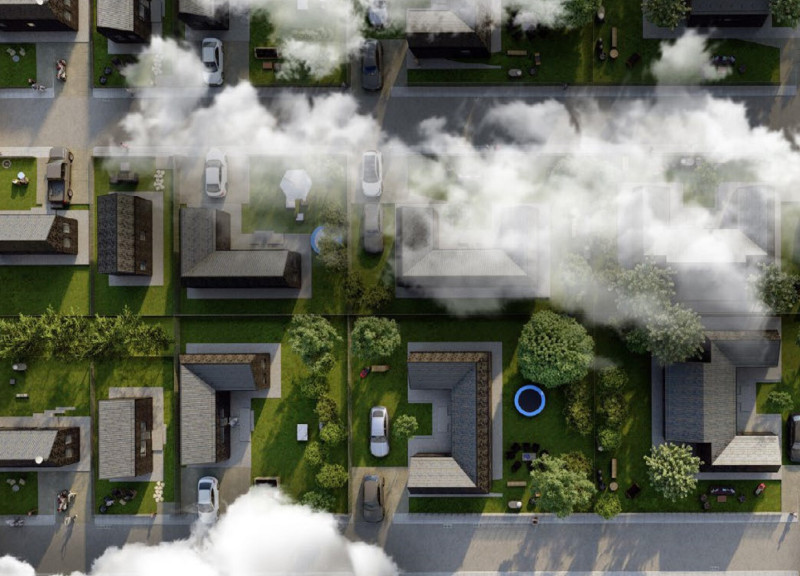5 key facts about this project
At its core, the project embodies a thoughtful approach to sustainable architecture, integrating materials that resonate with the region's natural palette. The use of locally sourced timber along with a combination of concrete and glass creates a dialogue between the built environment and the surrounding ecosystem. The choice of materials not only enhances the aesthetic appeal but also emphasizes durability and low environmental impact, addressing contemporary concerns regarding sustainability in architectural practice.
The spatial arrangement of the project is characterized by an open layout that encourages fluid movement and interaction among occupants. The design incorporates large windows and strategically placed openings that invite natural light, fostering an ambiance that enhances the overall inhabitability of the space. This focus on natural illumination reflects an understanding of how light interacts with architectural elements throughout the day, creating dynamic visual experiences that evolve with changing sunlight.
The functional aspects of the project are equally prioritized. It is designed to cater to its intended use, ensuring that every element serves a purpose. The layout facilitates both private and communal areas, allowing for a balance between solitude and social interaction. This duality is critical, particularly in environments where social connectivity is essential. Enhanced acoustical treatments within communal spaces also highlight the project’s commitment to comfort and usability, ensuring that sound does not impede the experience of those using the space.
In terms of design concepts, the project embraces principles of biophilic design, promoting a connection to nature through abundant greenery integrated within and around the structure. This integration not only enhances the aesthetic appeal but also contributes to the well-being of occupants by providing visual relief and improved air quality. The incorporation of green roofs and vertical gardens further underscores this commitment to environmental harmony, providing natural insulation and reducing the urban heat island effect.
Architectural details play a pivotal role in conveying the project's uniqueness. Each element—from the carefully considered joinery to the subtle transitions between materials—invites close inspection and reflection. These details are not merely decorative but enhance the functionality and durability of the building. For instance, overhangs are designed not only as a visual feature but to provide shade and protection from the elements, demonstrating a sensitivity to climatic conditions.
Moreover, the project's exterior façade is treated with a combination of textures, blending smooth finishes with rough-hewn surfaces that pay homage to traditional building methods while adopting contemporary techniques. This juxtaposition serves to link the architecture with its cultural context, fostering a sense of place that resonates with users and visitors alike. Rather than following austere modernist principles, the design engages with historical references, making it accessible and relatable.
The integration of technology within the architectural framework also merits discussion, as the project leverages smart technologies to enhance user experience and operational efficiency. Intelligent lighting systems, climate control, and energy management tools are seamlessly incorporated, underscoring a forward-thinking perspective on how architecture can adapt and respond to the needs of its users.
This architectural project stands as an example of how design can reflect both individual and collective aspirations while responding thoughtfully to environmental challenges. The attention to materiality, coupled with a strong sense of place and purpose, embodies a commitment to architecture that is not only functional but also enriching.
As you explore the various aspects of this project, including architectural plans, architectural sections, architectural designs, and architectural ideas, you will gain deeper insights into the principles that underpin this thoughtful approach. The harmonious balance of function, aesthetics, and sustainability showcased in this design offers valuable lessons for the future of architecture.


 Dilovan Dlawar Omar
Dilovan Dlawar Omar 























